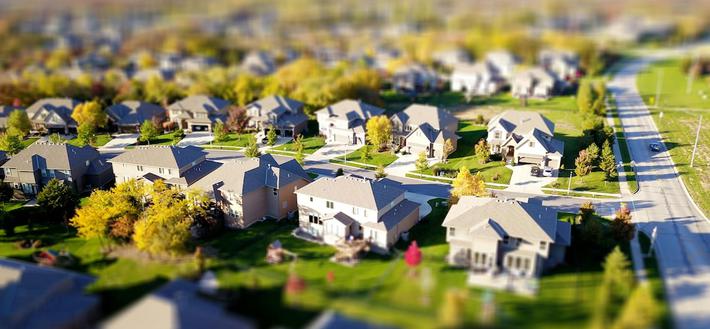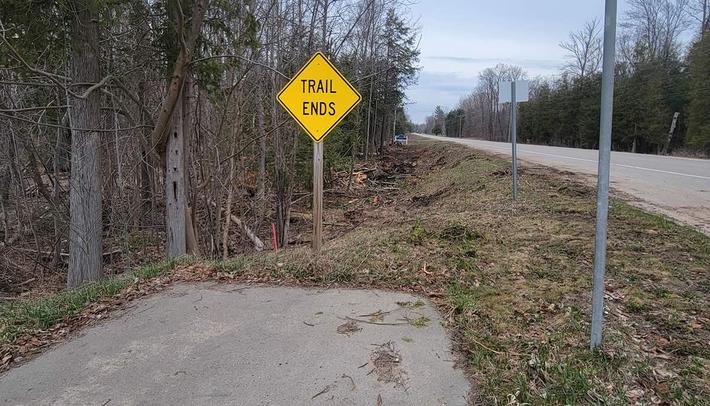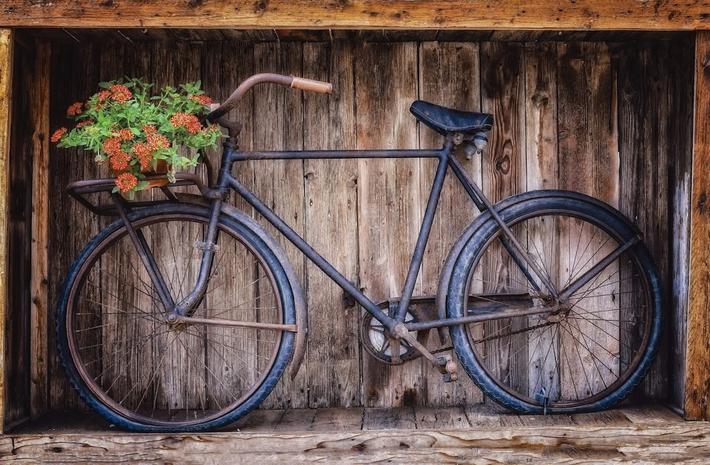
Bringing The Lewis School Back to Life
Couple takes on the restoration of a one-room schoolhouse in Kalkaska
By Laurel Manke | April 29, 2023
In June 2020, Liza Polaskey and her fiancé, Connor Brown, purchased The Lewis School, a historic one-room schoolhouse near Kalkaska. The white, wooden building has deep roots in the community and is situated near land with a meaningful connection to Brown’s family.
For the past three years, Polaskey and Brown have poured their hearts and souls into making the landmark their home Up North and restoring the building’s history as a hub for education and community. After a year and a half of commuting from Detroit to work on the schoolhouse, Polaskey and Brown officially moved into the schoolhouse in 2022.
Today, the landmark is not only habitable but also well on its way to complete restoration. It is freshly painted and insulated with a cheery interior, and the one-room, studio-style living quarters are warmed by a woodstove and filled to the brim with inviting seating areas, books, antiques, musical instruments, Polaskey's art studio, charming vintage kitchen appliances, and a dreamy selection of loose-leaf teas.
This Up North home—surrounded by ample room for gardening and rambling in the woods—is a dream come true for the couple, who had been looking for a place to call their own.
Making an Unexpected Purchase
“We always came Up North a lot for visits, camping, and visiting family,” Brown explains.
Brown’s aunts, uncle, father, and grandparents all owned property surrounding The Lewis School, including 400 acres of woods and a nearby family farmhouse.
Though Polaskey and Brown knew they wanted to move north, they didn’t expect to take on the renovation of a 115-year-old schoolhouse. In fact, purchasing the schoolhouse wasn’t even their idea, as the property wasn’t for sale. It was Brown’s father’s idea to ask about buying The Lewis School.
“We thought it was an interesting idea, to restore a historic building,” Brown recalls. He and Polaskey also liked the idea of being close to the land that had been so special to Brown’s family since his grandfather first purchased his farm there in 1949.
Serendipitously, when Brown’s father asked the current schoolhouse owners if they would be open to selling, the owners replied that they were eager to move on, as they had other hobbies occupying their time. After a visit to the property in February 2020, the couple closed on the schoolhouse in June of that year.
Restoring History
After closing on the property, the real adventure began. Over the past century, layers and layers of ceiling, flooring, paint, and even walls had accumulated within the schoolhouse. Restoring the building to its original glory required peeling back those layers.
When Polaskey and Brown first took ownership of the school, it had two separate entrances and two bathrooms. It also had partitioned half-walls that previous owners added to create rooms within the schoolhouse. Part of the renovation included downsizing to one bathroom and tearing down the walls to bring the school back to its original, one-room form.
They started by painting the exterior and gutting the interior, spray-foam insulating the walls, and salvaging building materials along the way.
One of the greatest renovation triumphs was unearthing the building’s beautiful original wood floors. Reviving the floors required peeling back laminate flooring and scraping away a tar-like adhesive. Underneath, the wood floors tell stories of their own—including markings where desks were screwed into the floor and even burn marks from the day a student’s sweater had caught fire and made the local newspaper.
Other highlights of the reno include adding white-washed wall boards using materials original to the schoolhouse and prominently displaying a piece of the building’s original ornate white tin ceiling as a kitchen backsplash. (The tin ceiling could not be maintained overall due to water damage.)
Digging into the Past
The couple didn’t just incorporate the building’s physical history into their restoration efforts—they’ve also brought in the history of the people who used the schoolhouse. It is clear from Poloskey’s piles of newspaper clippings and photocopies from the local archives and local history books that she cares deeply about connecting with and sharing the history of the building.
“I’ve even run across mentions of Connor’s grandfather Kingsley Brown’s farm, and one day, his visit to the schoolhouse to entertain students with a puppet show,” Polaskey tells us.
The original Lewis School was built in 1880 but burned down sometime thereafter and was rebuilt in 1905. The structure on the property today began operating as a school that same year. In its glory days, it functioned as a school and a community center, hosting holiday functions and community events.
Low enrollment led to the school’s closure in 1960, at which point it was put up for auction. The building was purchased in 1967 and again in the 1990s by the downstate couple Polaskey and Brown purchased from. Polaskey and Brown are the schoolhouse’s third owners and the first to try restoring it.
Creating a Community Fixture
From the start, Polaskey and Brown had a vision to not only bring the schoolhouse to life as their home, but also as a community gathering space. They are in the process of finalizing paperwork to make the schoolhouse a nonprofit organization where they can host groups and events, in-house concerts, and youth programming.
“One-room schoolhouses weren’t just for school children—they were a place people could gather when they needed help, for meals, movies, and get togethers,” Polaskey says.
Polaskey and Brown want to bring that community character back to the schoolhouse and plan to do so by leveraging their passions—community resilience, music, art, and permaculture. Brown works as a legal aid, and Polaskey has a background in art education. She is a professional artist (find her art at pickmeuppress.com) and sells prints locally. Her work uses materials found in nature, and her studio is strewn with natural-made dyes and pressed plants.
“Art is much more accessible when the materials are affordable. We want to offer after-school programs like printmaking and plant pressing to bring art to rural areas like Kalkaska,” Polaskey explains.
Connecting with the Great Outdoors
The pair also hope to engage youth and community in education outside the walls of the schoolhouse. Polaskey and Brown want to bring people to the property to enjoy and learn about native plants and permaculture. “We are working on building a food forest and have planted an abundance of fruit trees,” Brown explains.
Brown adds that they are following in the footsteps of conservationists in his family, recalling that his grandfather was a conservation officer and that his family has planted hundreds if not thousands of trees on their property over the years through Michigan’s Qualified Forestry Program.
The couple’s interest in gardening began before they moved north, and they knew they wanted to explore it in Kalkaska. “When we lived in Detroit, we started getting into gardening,” Polaskey says. “We turned our backyard into a cornfield and kept bees.”
Now, they have much more room to grow. Although the schoolhouse building itself only sits on about an acre, Polaskey and Brown have free reign to use the 40 acres adjacent to the property, which are owned by Brown’s family. They’ve already started their planting endeavors, and the lawn of the schoolhouse is dotted with young fruit trees that they hope someday provide ingredients for local wild wines and produce to sell at farmers markets.
When asked what is next up on the project list, Polaskey and Brown smile and agree no renovation project is ever “done” and that the list is endless. As temperatures warm, their sights are set on outdoor projects, like irrigation and planting more native plants to build a diverse and self-sustaining ecosystem.
Stay tuned to @thelewisschool on Instagram to learn more about renovations and programming as The Lewis School establishes its status as a nonprofit organization.
Trending

Walking in an Artsy Wonderland
Michigan Legacy Art Park is hosting the “Raindrops” artwork created by Dewey Blocksma and Patricia Innis at th... Read More >>
Seven Takeaways from Local Real Estate Agents for the Spring/Summer Market
The last few years in local real estate have been akin to what one local agent described as the “wild west,” w... Read More >>
Blazing the Boyne City to Charlevoix Trail
We’re getting ever closer to an interconnected northern Michigan thanks to ongoing work on the Boyne City to Charlev... Read More >>


